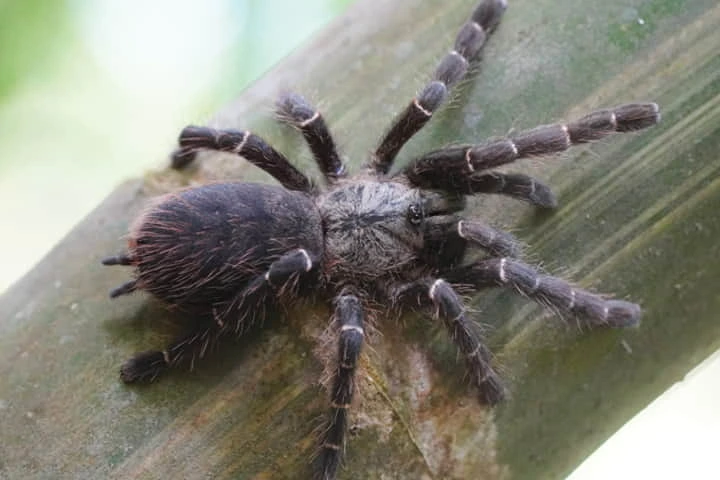It is indeed a proud moment for Thailand as for the first time in 104 years a new genus of tarantula has been discovered in Asia. And it is indeed novel.
As per a report in sciencenews.org, this newly found hairy spider is called bambootula. The reason is that it makes its home in bamboo which is stiff and tall and found in northern Thailand. The scientific name of the creature is Taksinus bambus.
Talking about this species, Narin Chomphuphuang an arachnologist from Thailand Khon Kaen University said, it “is the world’s first tarantula with a biology tied to bamboo”.
The hollow bamboo stems provide the spider with a hole or tunnel and obviously a readymade nest but the bambootula has a problem. It does not have the wherewithal, that is tools, to drill into the culms. For this it depends on animals like borer beetles and rodents or natural forces to make the openings. The creature once inside creates a “retreat tube” made of silk to keep itself secure and enabling it to move around with ease, mentions Chomphuphuang and his colleagues in a report in ZooKeys.
It was a popular wildlife YouTuber, JoCho Sippawat, who brought this new species to the notice of Chomphuphuang. He discovered them by accident when he was cutting bamboo in a forest close to his home. After examining the spider, Chomphuphuang and his team established that it belonged to a new genus and species on the basis of the shape and size of its reproductive organs.
The researchers informed that it is after more than a century, 104 years to be precise, that a new genus of tarantula has been found in Asia.

Besides this, its habitat also confirmed that the species was unique. Unlike other Asian tree-dwelling tarantulas, bambootula are found in bamboo forest which is 1,000 meters above sea level.
Also read: Scientists solve the mystery of how spider gangs plan attacks
The discovery may be surprising for many but not for Linda Rayor, a Cornell University arachnologist. The reason being that till now 49,000 spider species have been found by science and newly discovered ones are being constantly added to the existing list. Scientists suggest that one in every three to five spider species alive is yet to be brought to light and given a name. Rayor feels anyone can find a new spider. She adds that this includes, “local people looking and exploring and watching things”.
Chomphuphuang touches upon another important aspect which this new discovery has brought to the fore. He said, “few people realize how much wildlife in Thailand is still undocumented.” With only one-third of the country covered with forests, there is an urgent and immediate need for the scientists to look for new species so that the animals can be studied and protected where needed, said Chomphuphuang.




















